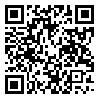Volume 23, Issue 4 (9-2021)
yafte 2021, 23(4): 58-74 |
Back to browse issues page
Download citation:
BibTeX | RIS | EndNote | Medlars | ProCite | Reference Manager | RefWorks
Send citation to:



BibTeX | RIS | EndNote | Medlars | ProCite | Reference Manager | RefWorks
Send citation to:
Shoorideh Z, Ravasi A A, Nouri R, Rashidlamir A. Effect of different exercises on effective factors involved in reverse cholesterol transfer in patients with coronary artery bypass surgery. yafte 2021; 23 (4) :58-74
URL: http://yafte.lums.ac.ir/article-1-3196-en.html
URL: http://yafte.lums.ac.ir/article-1-3196-en.html
Department of Sport Sciences, Kish International Campus, University of Tehran, Kish Island, Iran
Abstract: (1699 Views)
Background: The present study aimed to compare the effect of different exercises on effective factors involved in reverse cholesterol transfer in patients with coronary artery bypass surgery (CABG).
Materials and Methods: A number of 45 patients with CABGwere assigned to three groups: control (n=12), aerobic exercise (n=15), and resistance training (n=18). Three aerobic and resistance training sessions were performed per week for eight weeks. Anthropometric variables, expression of ABCG4 gen, as well as the serum levels of Apo-A and Apo-B, were measured before and after the training period. Data were analyzed using repeated measures of ANOVA. A p-value less than 0.05 was considered statistically significant.
Results: Aerobic and resistance training significantly increased the expression of ABCG4 gene, compared to those in the control group (P=0.001); nonetheless, there was no significant difference between the two training groups (P= 0.021). Significant differences were observed in serum levels of Apo-A and Apo-B in both aerobic and resistance training groups, compared to those obtained in the control group (P=0.001). However, the difference between aerobic and resistance training groups was significant for Apo-A (P= 0.001), but not for Apo-B (P=1.000). Moreover, the ratio of Apo-A to Apo-B was significantly different for the resistance training group, compared to that in the control group (P= 0.001); nevertheless, it was not significant for the aerobic training group (P=1.000).
Conclusion: As evidenced by the results of this study, resistance training improves cholesterol reverse transport regulators more than aerobic training; therefore, resistance training is recommended to regulate reverse cholesterol transfer.
Conclusion: As evidenced by the results of this study, resistance training improves cholesterol reverse transport regulators more than aerobic training; therefore, resistance training is recommended to regulate reverse cholesterol transfer.
Keywords: Aerobic training, Resistance training, reverse cholesterol transfer, ATP-binding cassette transporters
Type of Study: Research |
Subject:
قلب و عروق
Received: 2021/03/13 | Accepted: 2021/07/3 | Published: 2021/11/10
Received: 2021/03/13 | Accepted: 2021/07/3 | Published: 2021/11/10
Send email to the article author
| Rights and permissions | |
 |
This work is licensed under a Creative Commons Attribution-NonCommercial 4.0 International License. |







